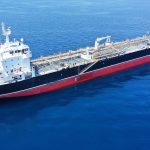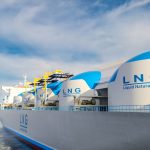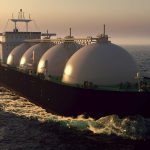

Gas Carrier Vessel Guide: LNG, LPG, and Chemical Carriers
Introduction
In the vast and complex world of maritime logistics, specialized gas carriers play a pivotal role. Chartership proudly offers a range of services in this essential segment, providing in-depth expertise in LNG, LPG, and chemical gas carriers. This guide delves into the operational dynamics and onboard technologies of these specialized vessels, highlighting their significance in the global maritime industry.
Historical Development
- Early Days: The concept of gas carriers emerged with the need to transport large quantities of gas across oceans. Initial attempts involved pressurized containers but were limited in capacity.
- Evolution: The development of LNG and LPG technology and LNG/LPG carriers in the mid-20th century revolutionized gas transport. Converting Natural Gas to Liquid form (i.e LNG or LPG) for transportation purpose enabled efficient transport as the volume in liquid form is about 600 times less than that of gas form per unit mass. Once the gas is transported to its target destination, its reconverted to gas form. For example, for LNG, its reconverted to gas form after it arrives at LNG import terminals using regasification facilities.
Types of Gas Carriers
- LNG (Liquefied Natural Gas) Carriers
- Cargo: LNG carriers transport natural gas that has been converted to liquid form at -162°C, reducing its volume by about 600 times for efficient shipping.
- Technology: These carriers employ advanced cryogenic technology. Membrane tanks are common, with insulation systems to maintain the low temperature. Some vessels use spherical, independent tanks known as Moss Rosenberg tanks.
- Usage and Routes: LNG carriers are critical for linking remote gas fields with global markets. Major routes include exports from the Middle East, Australia, and the U.S. to Asian and European markets.
- LPG (Liquefied Petroleum Gas) Carriers
- Cargo: LPG carriers transport gases like propane and butane. These gases are cooled or pressurized to remain in a liquid state.
- Technology: They feature either pressurized tanks, which keep the cargo under high pressure, or refrigerated tanks, which maintain a low temperature. Safety measures for handling flammable cargo are paramount.
- Usage and Routes: LPG carriers supply fuel for heating, cooking, and industrial processes worldwide, with significant routes including the Middle East to Asia and intra-Asian trade.
- Chemical Gas Carriers
- Cargo: These vessels transport a variety of chemical gases, each with unique handling requirements due to their hazardous nature.
- Technology: Tanks may have special coatings or be made of stainless steel to prevent cargo contamination and corrosion. The vessel design often includes segregated cargo systems for carrying different types of chemicals simultaneously.
- Usage and Routes: Chemical gas carriers are integral in the chemical industry, often operating on specialized routes based on the production and consumption patterns of specific chemicals.
Onboard Technologies
- Containment Systems: LNG carriers often use membrane containment systems, with layers of insulation and a thin membrane containing the LNG. Alternatively, Moss-type spherical tanks provide efficient space usage and safety.
On the other hand, LPG (Liquefied Petroleum Gas) carriers typically use either fully refrigerated or semi-refrigerated containment systems to transport liquefied gases like propane and butane. Fully refrigerated systems involve keeping the cargo at low temperatures, while semi-refrigerated systems use a combination of insulation and refrigeration. These containment systems help maintain the LPG in a liquid state during transportation.
- Safety Measures: Advanced gas detection systems, firefighting equipment, and double-hull designs enhance safety. Environmental technologies, like dual-fuel engines and waste heat recovery systems, reduce emissions and increase efficiency.
Conclusion
Gas carriers, each tailored for their specific cargo, play an indispensable role in the global energy and chemical supply chains. Understanding the nuances of LNG, LPG, and chemical gas carriers is crucial for maritime professionals navigating the complexities of this sector. As the demand for energy and chemicals evolves, so too will the technology and capabilities of these specialized vessels. Chartership.com expertise and diverse fleet offerings simplify this decision-making process, ensuring clients have access to the most suitable and efficient vessels for their cargo requirements. In the ever-evolving world of maritime logistics, Chartership remains a trusted and innovative leader.
Related posts


LNG Tanker Valuation: What Influences the Sale Price?

Buy and Sell Offshore Vessels






